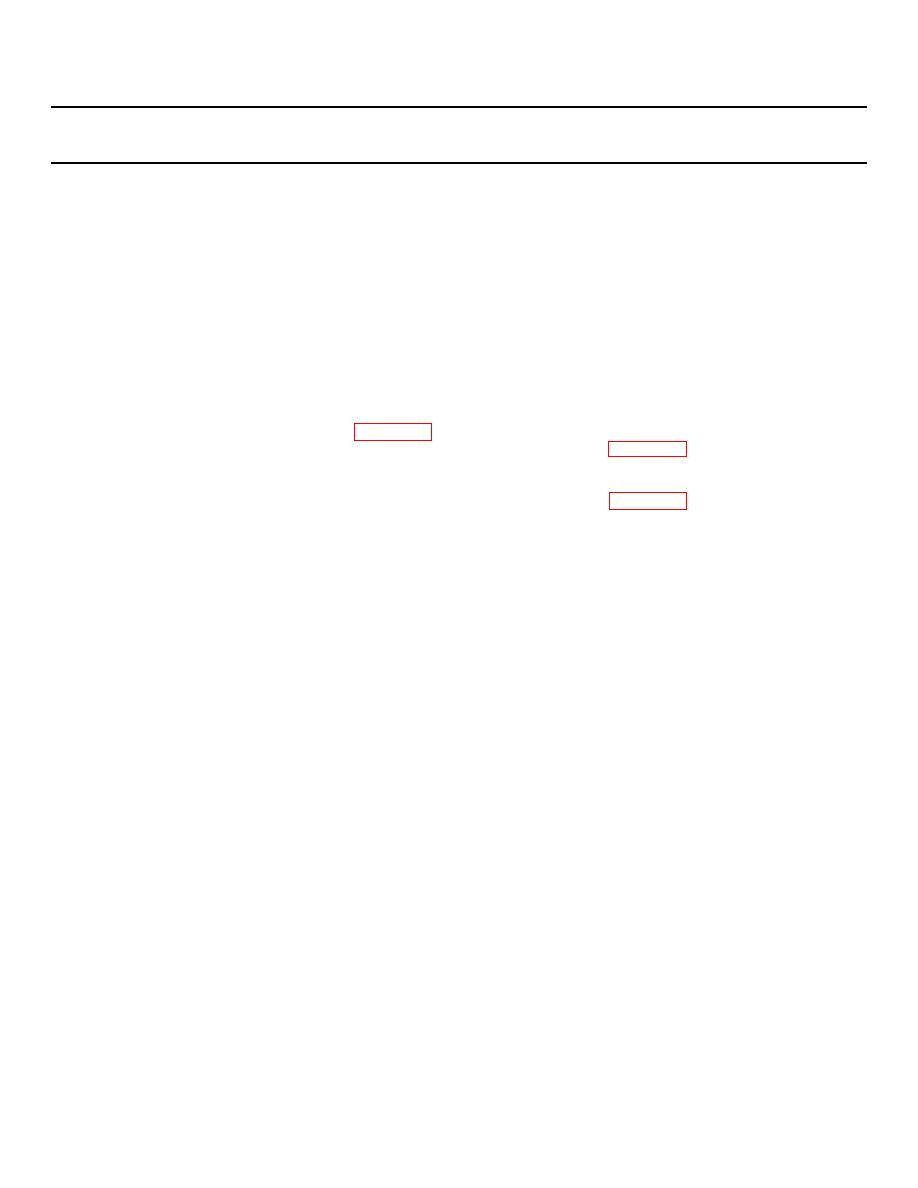 |
|||
|
|
|||
|
Page Title:
Table 2-2. Troubleshooting - CONT |
|
||
| ||||||||||
|
|
 TM 55-1905-223-24-4
Table 2-2. Troubleshooting - CONT
Malfunction
Test or Inspection
Corrective Action
STEP 5.
Check to see if fuel pump is getting fuel or fuel is aerated.
a.
Check fuel flow.
(1)
Remove the inlet line to the lift pump.
(2)
Operate the hand lever and check for suction.
(3)
If suction is not detected, rotate engine crankshaft 90 degrees and repeatcheck.
(4)
If there is suction, check for an obstruction in the fuel supply line. Clean or replace line as necessary.
b.
Bleed fuel system (PMCS, Item 12).
STEP 6.
Check for malfunctioning fuel pump.
a.
Remove the tachometer drive cable from the fuel pump.
b.
Crank the engine and make sure the tachometer drive shaft is turning.
c.
If the tachometer drive shaft rotates, check the gear pump for rotation.
(1)
Remove the fuel supply hose at the gear pump.
(2)
Look into the gear pump and crank the engine. The gear pump must turn. If the gear pump gears do not
turn, replace the fuel pump. (para. 2-32).
d.
If the tachometer-drive shaft does not turn, remove the fuel pump. (para. 2-32)
(1)
Crank the engine and check the accessory drive shaft for rotation.
(2)
In the accessory drive shaft does not turn, replace accessory drive.
(3)
If the shaft turns, the fuel pump is damaged and must be replaced (para. 2-32).
STEP 7.
Check to see if exhaust is restricted.
a.
Install a mercury manometer in the exhaust piping.
NOTE
The gauge adapter must be installed near the turbocharger or exhaust manifold in a
straight section of pipe.
b.
Operate the engine at rated RPM and load, and record the manometer reading.
NOTE
Exhaust pressure must not exceed 3 inches Hg (7.5 cm)
c.
Remove test equipment.
d.
If exhaust pressure exceeds the specifications, visually inspect the exhaust piping for damage.
e.
Replace or repair damaged piping.
2-22
|
|
Privacy Statement - Press Release - Copyright Information. - Contact Us |